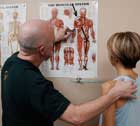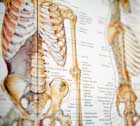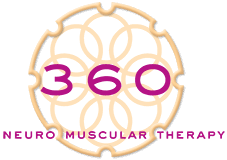Simply stated, NeuroMuscular Therapy (NMT) is problem solving massage therapy. NMT treatment is informed by postural analysis and information gathered from a comprehensive health and injury history. Advanced manual therapy techniques are then applied to reduce pain and improve function. Homecare activities reinforce positive outcomes for long lasting results .
Services FAQ




NMT has origins in Ayurvedic, osteopathic and chiropractic medicine. It’s been around since the 1930s, first in Europe, then in the United States.
In Europe, Stanley Lief, DO and Boris Chaitow, DO originally developed Ayurvedic manual therapy principles. Lief emphasized palpation to assess sensitivity soft tissue.
In America, in the 1940s and 50s, Dr. Janet Travell established herself as a specialist in treating muscle pain, publishing many journal papers. Travell became the first female personal physician to a President in the White House, treating Kennedy with Trigger Point injections to relax ‘cramps’ in his spinal muscles. In 1983, Travell and David Simons, MD published the first of two trigger point texts ‘Myofascial Pain and Dysfunction – The Trigger Point Manual Vol 1’. These revered texts have been translated into many foreign languages.
An American chiropractor named Raymond Nimmo (1904-86) came across Travell’s trigger point theories and noted that these noxious points coincided with his own clinical soft-tissue findings. Dr. Nimmo, who rejected the ‘bone out of place’ paradigm, may be considered the grandfather of NMT in America.
Paul St. John (a student of Nimmo) popularized Nimmo’s work throughout the 1970’s and onwards. He called the modality St. John Neuromuscular Therapy™. Judith DeLany, LMT, trained and taught for St. John, and went on to develop her own seminar program that she called NMT American Version™.
Throughout the century, the European and American versions maintained a similar theoretical base, but employed different manual techniques. In 1996, a groundbreaking relationship between Leon Chaitow, DO, ND (European, nephew of Boris Chaitow) and the Judith DeLany (American) resulted in the publication Modern Neuromuscular Techniques. Dr. Chaitow and DeLany later combined their talents and ideas again to write the seminal two volume texts called Clinical Application of Neuromuscular Techniques.
360 NMT® techniques integrate the best of the St. John, DeLany and Chaitow methods with the trigger point deactivation techniques of Jan Dommerholt, DPT and Robert Gerwin, MD. Leaders in the field of myofascial pain, Dommerholt and Gerwin founded Myopain Seminars which honors Dr. Janet Travell and is considered the seminal Myofascial Trigger Point Therapy training program in the United States.
Two words: Trigger Points.
A cornerstone of the NMT treatment protocol includes evidence-informed trigger point deactivation techniques. When combined in sequences with gliding, friction and stretching (all NMT fundamentals), results are enduring.
You can confidently see anyone on the 360 NMT staff for excellent muscular therapy. Everyone has the same “tool belt” of techniques and approach to treatment. They are ‘soft-tissue detectives’ – therapists who embrace the challenge of searching for the roots of chronic, hard-to-explain pain. Staff members have advanced, post-graduate training uniquely focused in evidence-based techniques for pain management. Most are either Nationally Certified NMTs or Certified Manual Trigger Point Therapists (or both). That said, each therapist has unique experiences with patient treatment and his/her special area of clinical interest.
Two words: Ability & Agility.
Rooted in NMT History, 360 NMT® treatments streamline what we think are the best techniques available with new, cutting-edge myofascial pain research. Our therapists have the highest massage qualifications in the country (CNMT & CMTPT). Their academic ability is combined with therapeutic agility. They make adept and meaningful changes to NMT treatment programs based upon patient feedback.
Trigger points are discreet, painful spots found within dense bands of skeletal muscle. They can be locally tender, but are able to send pain to far distant parts of the body. For example a spot in the calf muscle can set off jaw pain. We kid you not. They are great masqueraders. Trigger points can mimic nerve pain, joint pain, disc pain and organ pain.
Myofascial pain is defined by the presence of active trigger points. There are two types of trigger points: active & latent. Possibly nine-out-of-ten people have latent trigger points that, despite not causing spontaneous pain, can lead to performance deficits. These latent points can revert to active ones, sourcing spontaneous pain. MPS was the life’s work of trigger po®int pioneers Janet Travell, MD and David Simons, MD who co-wrote the seminal texts Myofascial Pain and Dysfunction – The Trigger Point Manuals Vols. 1&2.
If the “big stuff” has been ruled out and symptoms persist, NMT can help discern what part of your pain is driven from soft-tissue. It often prevents more expensive testing and/or more invasive procedures.
NMT is also helpful when exercises seem to cause more pain. For example, post-operative patients benefit from treatment when pain impedes strength gains in PT, but the surgeon sees no problem on imaging films. NMT can eliminate muscular sources of pain and strain on the surgical site, and successfully get you through a rehabilitation plateau.
Yes. However, the Initial Evaluation is longer to allow time for information gathering, postural and dynamic assessment, clinical reasoning. There will be hands-on treatment. Subsequent NMT sessions are generally shorter with less analysis and focus on reducing symptoms, restoring musculoskeletal balance and achieving treatment goals. All 360 NMT sessions include trigger point therapy, neuromuscular techniques and homecare recommendations to maintain gains made in session.
At present, we do not direct bill insurance. What we can do is provide you with statements for services rendered to submit to your insurance company for out-of-network reimbursement.
Our general “rule of thumb” is as follows: 360 NMT initially recommends 3-4 treatments to see if we can make an improvement. We look for a change in pain levels, increased activity tolerance and/or functional improvement. Subsequent recommendations for length and frequency of treatment are customized. If there is no change, we re-evaluate and make referrals to other colleagues.
Many clients use their Flexible Spending Account (pre-tax health benefit) cards at 360 NMT. We can generate receipts at year-end for your FSA and we recommend considering NMT treatments when deciding how much funding to put into your account annually.







